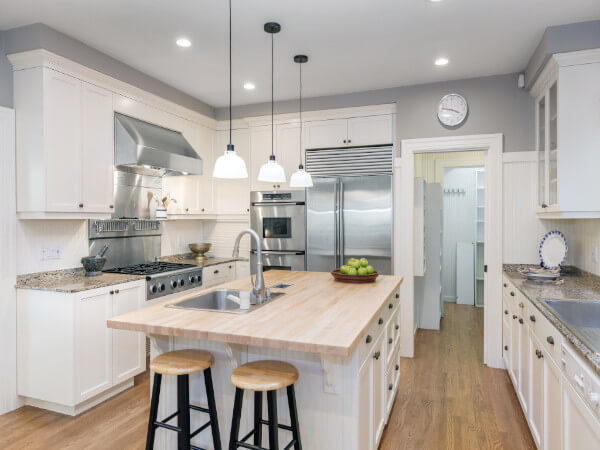Dining room paint colors are an important part of creating a beautiful and inviting space.
It is important to consider what color will work best with the rest of your home, while also considering how light or dark you want the space to be.
In this article, we will teach you more about dining room paint colors and how to make the best decision for your space. Keep reading to find out more.
Why are the right dining room colors important?
When you are trying to create a beautiful, inviting space in your home, one of the most important factors is choosing the right paint color. While many people consider the rooms that need the most attention in their homes (like bathrooms and bedrooms), it is also important to keep your dining room in mind.

Image Credit: http://sherwin-williams.com
This often gets overlooked because it doesn’t need as much work; however, if you want this space to be used frequently and look its best when guests come over, then you will want to consider all of your options carefully.
Since this room tends to be small and doesn’t get a lot of natural light (because it isn’t typically located near windows), we recommend painting the walls a light color – like white or cream – to keep the space looking bright and inviting.
When your colors are too dark, it not only makes the room smaller but can also be overwhelming for guests as they enter. The color will also make the other areas in your home feel darker and more closed off than if you were to choose a lighter color.
How do I know what dining room paint colors to use?
One of the main factors we recommend considering when choosing your paint color is how light or dark you want the space to look. If you want this room to feel serene and calm, then painting it a soft white or cream will allow natural light from windows (or electrical lighting) to reflect beautifully throughout the space.
We also recommend choosing one hue and sticking with it throughout the room so that everything feels cohesive. For example, this can be done by simply painting one wall of your dining room orange while painting another wall yellow instead of each wall a different color.
Neutral color palette
A neutral color palette throughout the room can also help keep it feeling calm while adding pops of color here and there with accent pieces will keep your guests entertained as they relax.
If you want to use darker colors throughout the space, then we recommend painting all of the walls with these colors. This will create a more dramatic look that won’t be as bright as lighter hues but is still inviting enough for most people.
There are no hard rules when it comes to choosing what color(s) you should paint your dining room; however, we recommend considering how light or dark you want the space to look and find a color palette that works well with those choices. Once you’ve decided on one main tone, try finding accent pieces in other colors that will bring in a bit of variety.
Steps to choose the right dining room paint colors
Step 1: Determine how light or dark you want your space to look
The first thing we recommend doing when trying to decide what color(s) you should paint your dining room is determining how much natural light comes into the space and if it would be better off painted a lighter color, darker color, or left alone completely.
You can do this by simply pulling a chair up to one of your windows during the day and looking at how much light reflects onto the walls while also considering what other colors are surrounding it. If there isn’t much natural light coming into this area, then a brighter color might be best for you as darker colors will absorb the light rather than reflect it.
If there is a lot of natural light coming into this area, then we recommend painting the walls a soft white or cream tone to make the space feel bright and inviting for guests. This also allows other colors in the room (furniture, accents, etc.) to pop more and create an overall cohesive look to your decor.
Another option is painting them a deeper color depending on where they are located in your home. For example, if these walls are located near windows that receive a large amount of natural light then we recommend painting them a lighter color to reflect this light and open up the space. However, if these walls are located near windows that might not receive much natural light, then we recommend painting them a darker tone that absorbs most of it and closes in the room.
Also, consider the mood that you want to feel when in your dining room. This goes hand in hand with the color that you choose.
Once you have determined whether or not to paint your walls a lighter or darker color, then go to step 2.
Step 2: Find whatever colors work best with those choices
Now that you’ve decided whether or not to paint your walls a light or dark tone as well as what kind of mood you would like painted throughout the rest of this room, it is best to find colors that work well with those choices. If you want a bright dining room then pairing colors such as green, yellow, or white will make this space feel larger and more open.
If you want to create a dramatic ambiance then pairing colors such as purple, blue, or red with dark wood furniture is another way to bring lots of contrast into this area.
However, if you do not like the idea of painting your walls a bright color or would like for them to match with certain furniture pieces already in your home, there are many ways to incorporate these hues through other objects.
Decorating your room also includes the furniture itself, so feel free to paint a piece of them in your dining room if you would like to replace it with a new piece or just freshen up a tired old one.
Step 4: Make sure anything that goes with these colors matches
You have decided on whether to paint your walls a lighter or darker color as well as what kind of mood you’d like painted throughout this area and now it is time for things such as furniture and accents to come into play. If you want this space to be bright and welcoming then painting furniture pieces white will make them pop beautifully off of those light walls while also creating an overall cohesive look throughout the rest of your decor. The same logic used for the dining room might be applied when thinking about the potential of painting furniture.

Image Credit: http://franklinpainting.com
Final thoughts on dining room paint colors
In conclusion, interior design is a complex and imaginative process. Designing the perfect dining room might take some time but it’s totally worth it and in the end, will make you feel at ease in your home.
If you want to get started on improving your home, we invite you to use these tips for inspiration.
The post Dining Room Paint Colors appeared first on Kitchen Infinity.
Did you miss our previous article…
https://chefbuano.com/?p=661





